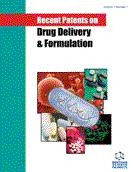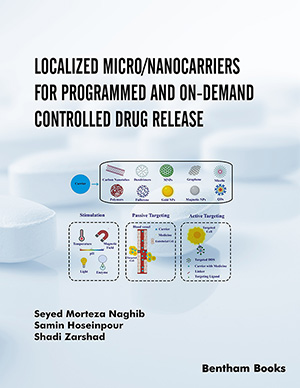Abstract
Recently, great attention has been paid to in situ gel-forming chitosan/glycerophosphate (CS/Gp) formulation due to its high biocompatibility with incorporated cells and medical agents, biodegradability and sharp thermosensitive gelation. CS/Gp is in liquid state at room temperature and after minimally invasive administration into the desired tissue, it forms a solid-like gel as a response to temperature increase. The overview of various recently patented strategies on injectable delivery systems indicates the significance of this formulation in biomedical applications. This thermosensitive hydrogel has a great potential as scaffold material in tissue engineering, due to its good biocompatibility, minimal immune reaction, high antibacterial nature, good adhesion to cells and the ability to be molded in various geometries. Moreover, CS/Gp hydrogel has been utilized as a smart drug delivery system to increase patient compliance by maintaining the drug level in the therapeutic window for a long time while avoiding the need for frequent injections of the therapeutic agent. This review paper highlights the recent patents and investigations on different formulations of CS/Gp hydrogels as tissue engineering scaffolds and carriers for therapeutic agents. Additionally, the dominant mechanism of sol-gel transition in those systems as well as their physicochemical properties and biocompatibility are discussed in detail.
Keywords: Chitosan, drug delivery, glycerophosphate, hydrogel, injectable, thermosensitive, tissue engineering.
 117
117 11
11 1
1















